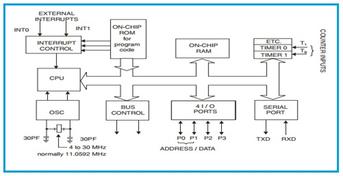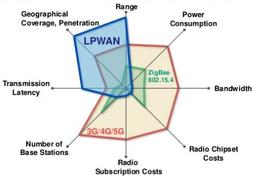
DDS Protocol Architecture Basics
Explore the fundamentals of DDS protocol architecture, focusing on its brokerless approach within the context of the Internet of Things (IoT).
Showing 20 posts (Page 2 of 3)
Advertisement

Explore the fundamentals of DDS protocol architecture, focusing on its brokerless approach within the context of the Internet of Things (IoT).

Explore various FPGA types based on architecture, configuration memory, features, capacity, application, and packaging. Understand their advantages and disadvantages for selecting the right FPGA.

Explore FANET communication architectures, including centralized and decentralized approaches, UAV components, and wireless technologies.

Explore FPGA architecture, including CLBs, IOBs, and interconnection networks. Understand key components like LUTs, flip-flops, and memory blocks in modern FPGAs.

Explore Frame Relay, a packet switching technology, covering its architecture, frame format (standard and LMI), advantages, and disadvantages.

Explore GNSS data processing within 5G mobile phones, covering GNSS architecture, signal processing steps, and key components. The article also outlines the GNSS architecture typically found in these devices.

Explore the Intel 8051 microcontroller architecture, covering its key components like CPU, memory, I/O ports, timers, serial communication, and interrupts. Learn about its practical applications.
Learn about microcontrollers: architecture, hardware interfacing, timers, interrupts, serial communication, cross compilers, and programming. Explore differences between microcontrollers and microprocessors.

Explore the architecture of an IoT-based water quality monitoring system. Learn about its advantages over manual and nodal methods for lakes, rivers, and more.

Learn the fundamentals of IPTV, including its features, architecture, set-top boxes, and benefits. Understand how IPTV delivers digital TV over IP networks.

Explore LoRa technology: frame structure, LoRaWAN architecture with gateways and end devices, and the protocol stack layers for effective IoT network design.

Learn about LoRaWAN interface types (hNS-JS, vNS-JS, ED-NS, AS-hNS, hNS-sNS, sNS-fNS, AS-JS) and their roles in LoRaWAN network architecture.

Explore the architecture and benefits of a LoRaWAN-based smart parking system, which reduces traffic congestion and offers efficient parking management.

Learn about LPWAN (Low Power Wide Area Network) technology, its architecture, key features, and benefits for IoT and M2M applications.

An overview of LTE Advanced architecture, including E-UTRAN components like P-GW, S-GW, MME, and eNB. Also details the protocol stack divided into NAS and AS layers.

Understand the LTE-M architecture, including the user plane and control plane, for cellular IoT communication. Explore network attach options and data connectivity.

Explore the benefits and drawbacks of Machine-to-Machine (M2M) communication, including its architecture, advantages, and disadvantages in various network topologies.

Explore the core distinctions between microprocessors and microcontrollers, their applications, and shared features in embedded systems.

Explore the architecture of MQTT, including message types, formats, and the exchange between server brokers and clients. Ideal for IoT.

Compare MSP430 and 8051 microcontrollers, highlighting their architecture, features, specifications, and key differences in this detailed comparison.
Advertisement